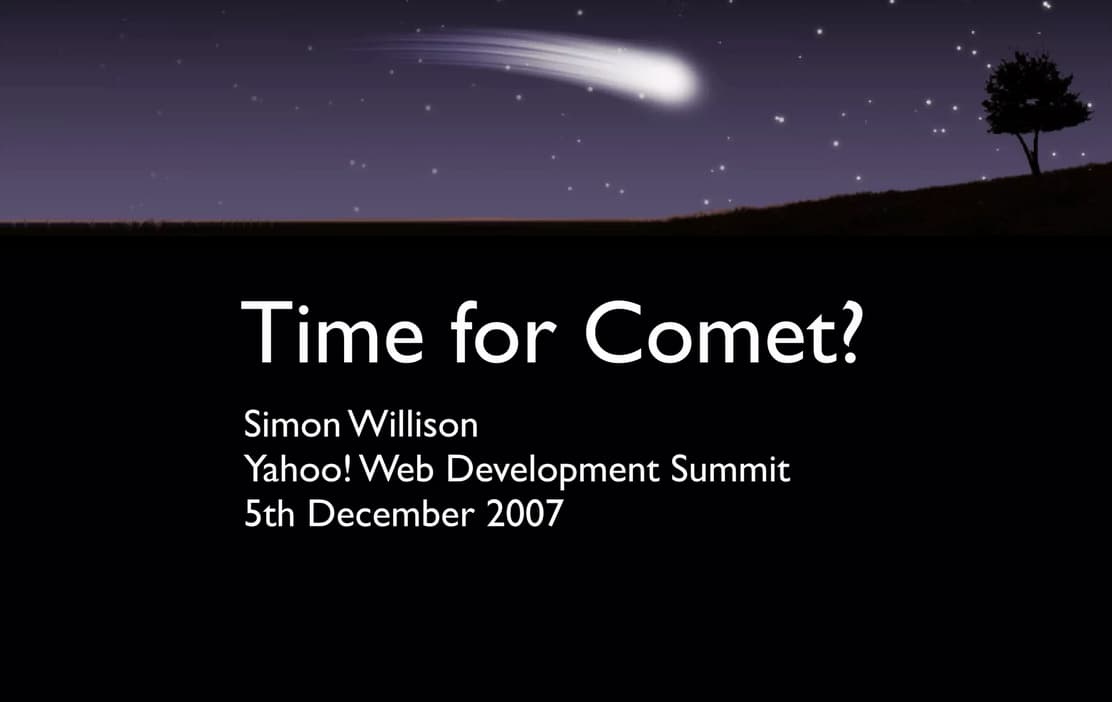December 2007
91 posts: 2 entries, 80 links, 9 quotes
Dec. 1, 2007
Transparent PNGs in Internet Explorer 6. 24ways kicks off again, with the first article introducing super-sleight, an updated script for getting transparent PNGs to work in IE6.
BBC Radio Labs: Perl on Rails. BBC engineered built their own Rails clone in Perl to fit in with the BBC’s engineering infrastructure—it’s already running the new programmes guide.
Why the h can’t Rails escape HTML automatically? It would be a pretty huge change, but auto-escaping in Rails 2.0 could close up a lot of accidental XSS holes.
Dec. 3, 2007
Perl on Rails—Why the BBC Fails at the Internet. Depressing explanation of how the BBC’s decision to outsource its technical infrastructure to Siemens has resulted in severe technology limitations, including the need for everything to run on Perl 5.6 (5.8 came out in 2002).
First Notes on Django. Cool, the IETF are developing internal tools with Django.
If you only remember one thing about handling non-HTML output via Django: know that you can use the HttpResponse object as if it were a file. Writing to such an object and returning it will give you the output you wrote. It's a very simple concept, but one that translates well to third-party libraries.
Datejs—A JavaScript Date Library. Building a date API around chaining—Date.today().next().thursday()—is a neat concept. I’d like to see that adapted for Python’s datetime library.
The D Language and Server Logs. Neat example of a simple D program for crunching log files.
Dec. 5, 2007
OAuth Core 1.0. The final spec. Expect to see this crop up all over the place in the next few months.
xkcd: Python. Just type “import antigravity”.
Call for Participation for XTech 2008. XTech 2008 will be in Dublin, Ireland from the 6th to the 9th of May. Lots of really interesting topics in the CfP (OpenID, OAuth, Comet, CouchDB...)—deadline for submissions is the 25th of January.
Django Basic Apps. Nathan Borror has released a suite of simple, reusable Django applications: Basic Blog, Basic Places, Basic People, Basic Library and Basic Profiles.
YUI 2.4.0 released. Lots of great new features, but the one I’m most excited about is Selector: YUI finally has a CSS query engine.
Comet works, and it’s easier than you think
I gave a talk this morning at the Yahoo! Web Developer Summit on Comet, cometd and Bayeux.
[... 1,314 words]OpenID 2.0 Final(ly)! Launched at the Internet Identity Workshop. The most interesting feature is probably directed identity, which goes a long way to solving some of the usability issues involved in users having to enter their own URLs.
Dec. 6, 2007
Conversation with Bill Gates about IE8 and Microsoft Transparency. Molly asks the tough questions about IE8—it looks like there should be a lot of IE8 material at MIX08 next year.
The companies that couldn't beat Microsoft have all died, and evolution has resulted in three very different types of companies that are each immune to Microsoft's strategies in their own way. Yet all are still vulnerable to the same thing: a better product. For the end users, this is a good position for the industry to be in.
CouchDB Roundup. The CouchDB project is interested in contributions from people who can write a large file driver for Erlang, help figure out the CouchDB security model and build scripts to help benchmark performance, scalability and reliability.
Google Chart API (via) Really neat charting API from Google—simply encode your chart data and configuration options in to a URL and Google will serve up a nicely rendered PNG. No API key required. It’s like a documented version of the Google Groups rounded corners API.
DiSo: Distributed Social Networking applications (via) New project to prototype a decentralised social network on top of WordPress, using OpenID, microformats and social whitelisting.
Dec. 7, 2007
Thanks to OpenID and OAuth, the Open Social Web is Beginning to Emerge. My blog’s OpenID powered watchlist and “your comments” features got a write-up on Wired! Nice to know that someone has noticed them.
Blogmaker, a free blogging app for Django (via) “Blogmaker is a full-featured, production-quality blogging application for Django. It supports trackbacks, ping and comments with moderation and honeypot spam prevention.”
James Henstridge: OpenID 2.0. Excellent description of the new features in OpenID 2.0, including a clear explanation of directed identity and attribute exchange.
Unfortunately, I was shocked, horrified and moderately surprised to see that nowhere is there any mention of how to encode negative numbers. Google, I appreciate you trying to help, and I understand that this grew out of needs for Google Finance, where stock prices can never dip below zero. But there's really not that much data out there in the real world that always exists solely above the origin.
Google Chart API Revisited. Marty does some more digging.
Dec. 8, 2007
Negative numbers in the Google Chart API. Stuart has some ingenious tricks for showing negative values on Google Charts, based on transforming the data to positive values and then relabeling the axes.
JavaScript Internationalisation, explained by reindeer. “Santa even spooked Comet recently by talking about him as if he were some pushy web server.”
The researchers found that simply having the doctors and nurses in the I.C.U. make their own checklists for what they thought should be done each day improved the consistency of care to the point that, within a few weeks, the average length of patient stay in intensive care dropped by half.
Thai personal names (via) “Family names were allocated to families systematically and the use of family names is still controlled by the government. Any two people in Thailand with the same family name are related.”
Dec. 9, 2007
Back To The Future of Print. Nat’s contribution to 24 ways: a long needed update on the state of the art in print stylesheets.
